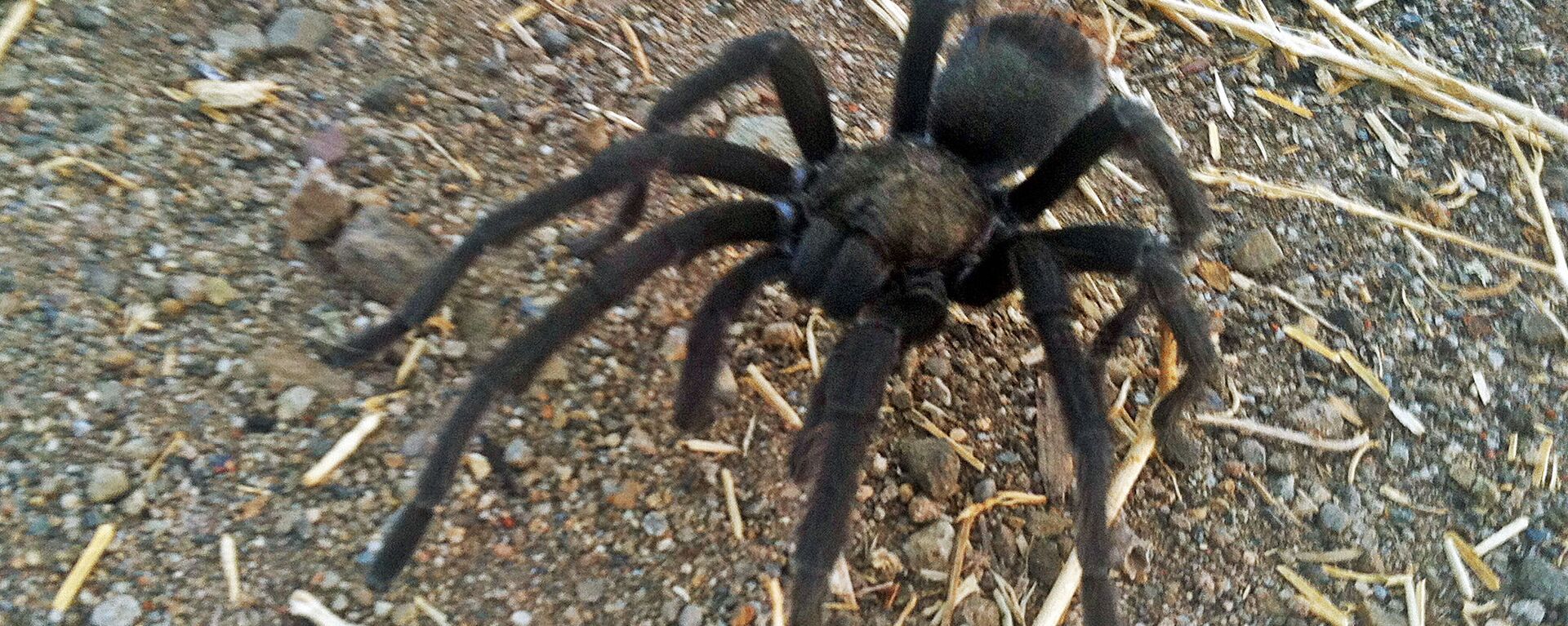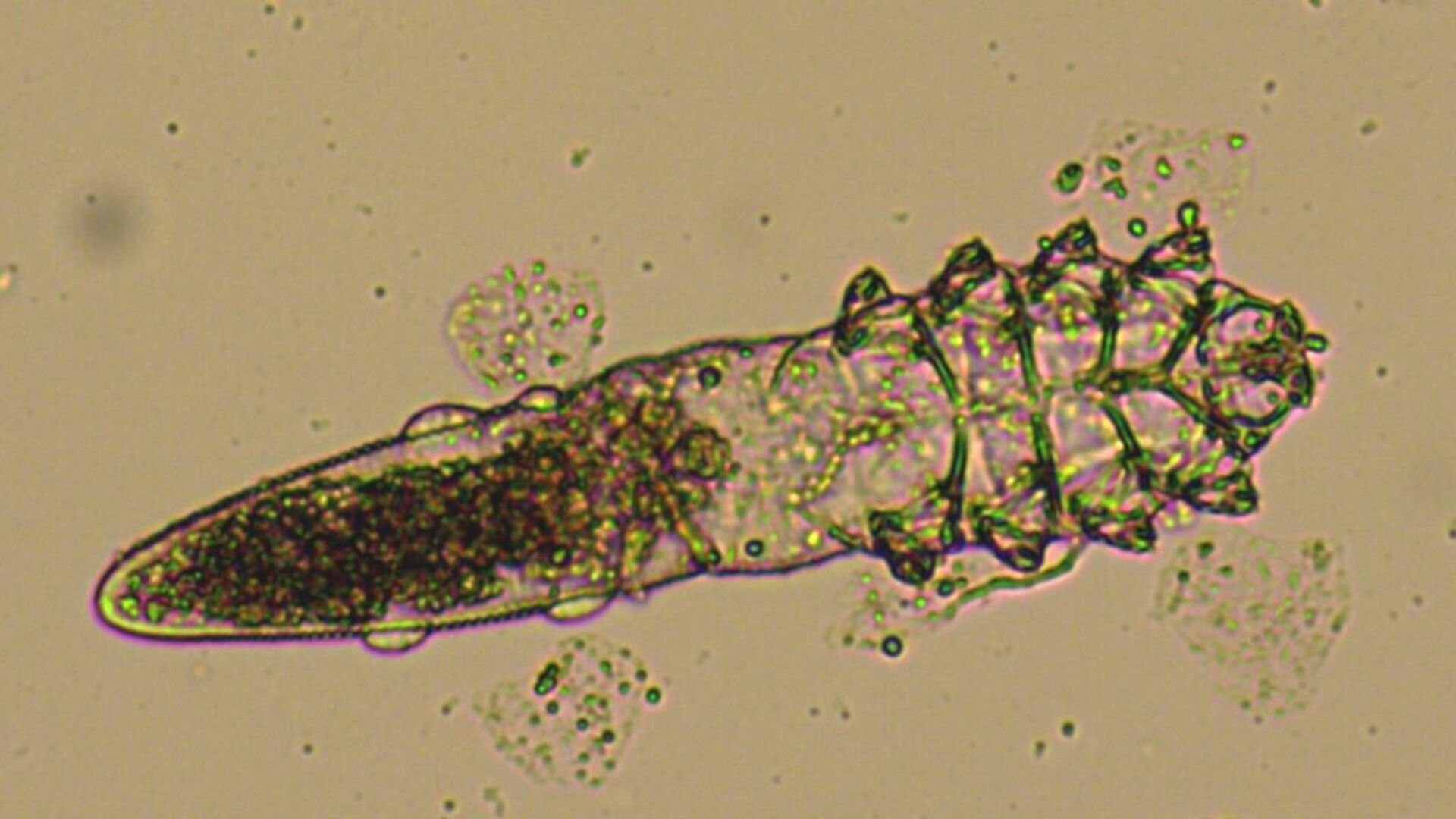https://sputnikglobe.com/20220622/the-tiny-animals-you-didnt-know-were-breeding-on-your-face-at-night-1096551964.html
The Tiny Animals You Didn't Know Were Breeding on Your Face at Night
The Tiny Animals You Didn't Know Were Breeding on Your Face at Night
Sputnik International
Scientists found that the mites have lived on humans so long that, like a cave-dwelling animal species who gradually go blind through evolution, it has lost... 22.06.2022, Sputnik International
2022-06-22T11:40+0000
2022-06-22T11:40+0000
2022-08-06T13:32+0000
nature
face
parasites
skin
science & tech
https://cdn1.img.sputnikglobe.com/img/07e6/06/16/1096552049_100:0:1296:673_1920x0_80_0_0_50e059012e43b6773e1ab6276179de7a.jpg
Microscopic parasites live in the hair follicles on your face — and crawl out at night to bump uglies with each other while you sleep.New research published by the Molecular Biology and Evolution journal has found they may soon go extinct as its genetic code "erodes" — but scientists say that's not a good thingStudy co-author Dr Alejandra Perotti of the University of Reading said the Demodex follicularum mites live in beneficial symbiosis with us from just after birth, when they are passed on from our mothers during breastfeeding.Demodex follicularum has the fewest functional genes of any arthropod — the biological term for all articulated creepy-crawlies including crustaceans, insects and arachnids.The mites have lost the gene that regulates sleep and wakefulness, relying instead on changes in their host's melatonin levels secreted through the skin. They have also lost their protection from ultraviolet light, since the only emerge from our pores at night to breed, while their leg muscles have atrophied to a single cell.The authors of the paper published by the Molecular Biology and Evolution journal argue the changes have turned the mites into symbionts rather than parasites like mosquitos or fleas, which can easily hop from one animal to another.And they fear the loss of genetic diversity in the micro-beasts could doom them to extinction as it becomes harder for them to find mates.
https://sputnikglobe.com/20220119/worm-parasite-that-preys-on-spiders-named-after-actor-who-played-spider-killer-in-film-1092375332.html
Sputnik International
feedback@sputniknews.com
+74956456601
MIA „Rossiya Segodnya“
2022
James Tweedie
https://cdn1.img.sputnikglobe.com/img/07e4/08/1c/1080307270_0:3:397:400_100x100_80_0_0_7777393b9b18802f2e3c5eaa9cbcc612.png
James Tweedie
https://cdn1.img.sputnikglobe.com/img/07e4/08/1c/1080307270_0:3:397:400_100x100_80_0_0_7777393b9b18802f2e3c5eaa9cbcc612.png
News
en_EN
Sputnik International
feedback@sputniknews.com
+74956456601
MIA „Rossiya Segodnya“
Sputnik International
feedback@sputniknews.com
+74956456601
MIA „Rossiya Segodnya“
James Tweedie
https://cdn1.img.sputnikglobe.com/img/07e4/08/1c/1080307270_0:3:397:400_100x100_80_0_0_7777393b9b18802f2e3c5eaa9cbcc612.png
nature, face, parasites, skin, science & tech
nature, face, parasites, skin, science & tech
The Tiny Animals You Didn't Know Were Breeding on Your Face at Night
11:40 GMT 22.06.2022 (Updated: 13:32 GMT 06.08.2022) Scientists found that the mites have lived on humans so long that, like a cave-dwelling animal species who gradually go blind through evolution, it has lost the ability to live independently.
Microscopic parasites live in the hair follicles on your face — and crawl out at night to bump uglies with each other while you sleep.
New research
published by the Molecular Biology and Evolution journal has found they may soon go extinct as its genetic code "erodes" — but scientists say that's not a good thing
Study co-author Dr Alejandra Perotti of the University of Reading said the Demodex follicularum mites live in beneficial symbiosis with us from just after birth, when they are passed on from our mothers during breastfeeding.
"We should love them because they're the only animals that live on our bodies our entire life and we should appreciate them because they clean our pores," Perotti says. "Besides, they're cute," she insists.
Demodex follicularum has the fewest functional genes of any
arthropod — the biological term for all articulated creepy-crawlies including crustaceans, insects and arachnids.
The mites have lost the gene that regulates sleep and wakefulness, relying instead on changes in their host's melatonin levels secreted through the skin. They have also lost their protection from ultraviolet light, since the only emerge from our pores at night to breed, while their leg muscles have atrophied to a single cell.

19 January 2022, 18:57 GMT
The authors of the paper published by the
Molecular Biology and Evolution journal argue the changes have turned the mites into symbionts rather than
parasites like mosquitos or fleas, which can easily hop from one animal to another.
And they fear the loss of genetic diversity in the micro-beasts could doom them to
extinction as it becomes harder for them to find mates.



